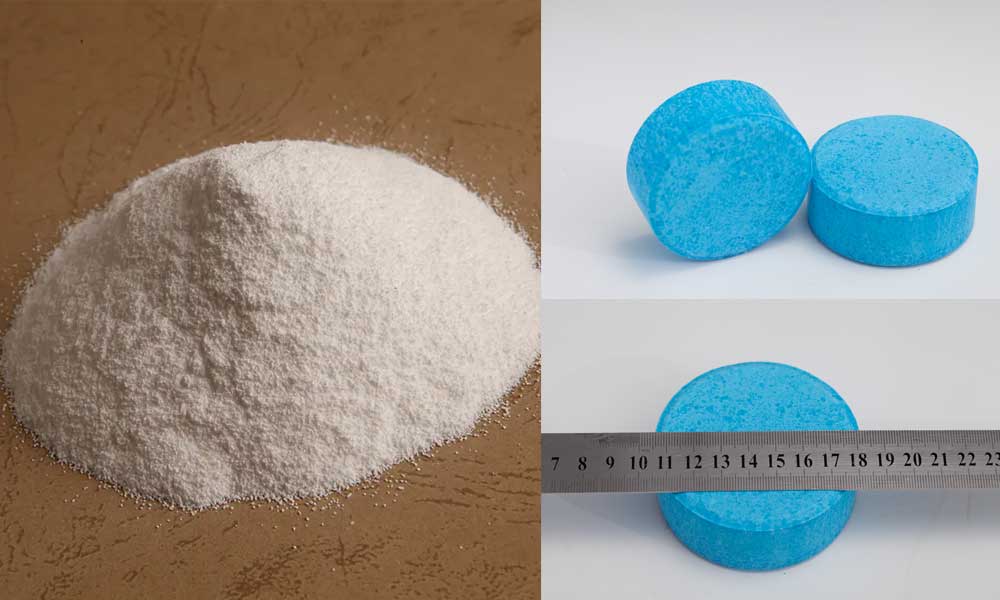Cyanuric acid, a white crystalline powder with a distinct chemical structure, has gained significant attention due to its multifaceted applications across various industries. This compound, composed of carbon, nitrogen, and oxygen atoms, has demonstrated remarkable versatility and effectiveness, leading to its widespread adoption in diverse sectors. This article delves into the applications of cyanuric acid, highlighting its benefits while emphasizing the importance of sustainable practices in its usage.
Swimming Pool Water Treatment Chemicals
One of the most well-known applications of cyanuric acid is in swimming pool maintenance. This compound is utilized to stabilize chlorine in pool water, extending its effectiveness and reducing the need for frequent re-chlorination. Cyanuric acid forms a protective barrier around chlorine molecules, shielding them from the degrading effects of UV rays. This ensures that chlorine remains active in the water for a longer duration, thereby reducing the overall chemical consumption and maintenance costs for pool owners.
Fire Retardants and Flame Inhibitors
Cyanuric acid plays a vital role in enhancing the fire resistance of various materials. When combined with other chemicals, it forms fire retardants and flame inhibitors that are used in textiles, plastics, and other combustible materials. These additives release gases when exposed to high temperatures, creating a barrier that hinders the spread of flames and retards the ignition process. This application has proven crucial in safeguarding lives and property in various fire-prone industries.
Agricultural Sector
In agriculture, cyanuric acid finds its use as a nitrogen stabilizer in fertilizers. Nitrogen, a vital nutrient for plant growth, can be lost to the environment through processes like leaching and volatilization. Cyanuric acid, when added to fertilizers, helps slow down these processes, allowing plants to absorb nitrogen more efficiently. This not only enhances crop yields but also reduces the environmental impact of excessive nitrogen runoff, which can contribute to water pollution.
Photography and Dye Synthesis
Cyanuric acid is utilized in the production of photographic chemicals and dyes. Its unique chemical structure makes it a suitable intermediate in the synthesis of various colorants used in the textile and printing industries. The compound’s stability and ability to form complexes with metal ions play a crucial role in these applications, contributing to the vibrant and long-lasting colors seen in fabrics and prints.
Environmental Considerations and Sustainable Practices
While cyanuric acid offers numerous benefits, its usage should be approached with careful consideration for environmental impact. Over-reliance on cyanuric acid in swimming pools, for instance, can lead to elevated levels in the water, affecting its biodegradability and potentially harming aquatic ecosystems. It’s essential to strike a balance between using cyanuric acid to extend chlorine’s lifespan and employing alternative pool sanitation methods to mitigate its accumulation.
Additionally, CYA manufacturers are encouraged to adopt sustainable production methods that minimize waste and energy consumption during cyanuric acid synthesis. Proper disposal and recycling techniques should also be implemented to prevent contamination of water bodies and soil.
Cyanuric acid’s applications span various industries, showcasing its adaptability and utility in modern society. From pool maintenance to fire prevention, agriculture to color synthesis, its impact is far-reaching. However, the responsible use of cyanuric acid is crucial to avoid adverse environmental consequences. As industries continue to innovate, incorporating sustainable practices into cyanuric acid production and application will ensure its benefits are reaped without compromising the planet’s well-being.
Post time: Aug-23-2023


